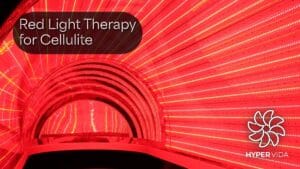Quick Answer:The most common symptoms of poor circulation include cold hands or feet, tingling, numbness, leg pain during walking that eases with rest, skin color changes, slow wound healing, swelling in the lower legs, bulging varicose veins as a visible sign in the legs, chest pain as a critical warning sign that may indicate severe circulation issues, and general fatigue.
These symptoms often begin in the legs and feet and may reflect conditions such as peripheral artery disease or chronic venous insufficiency that require medical attention.
Why circulation matters
Healthy circulation moves oxygen and nutrients through every tissue. The heart pumps blood throughout the body, delivering these essential substances to all organs and tissues. The lymphatic system also plays a key role by draining fluids from tissues and supporting overall circulation. When that flow slows or becomes blocked, tissues do not receive what they need to perform, repair, and defend.
Early attention is essential because circulation problems can affect mobility, energy, wound healing, and overall vitality. Many people notice cold toes in an air conditioned office, calf tightness during a walk on the boardwalk, or a small nick that lingers longer than expected.
These everyday observations can be early clues that blood flow is not optimal. Authoritative medical sources describe a consistent cluster of symptoms that help you recognize the issue and take informed next steps.
What is poor circulation?
Poor circulation describes reduced blood flow in an area of the body or throughout the body. The circulatory system includes the heart and a network of arteries and veins that deliver oxygen and nutrients while removing cellular waste.
When arteries narrow or veins fail to move blood efficiently back to the heart, tissues experience lower oxygen delivery and slower clearance of byproducts. Reduced blood supply can lead to symptoms like slow healing of wounds, changes in skin color, and alterations in hair and nail health.
This is why people often feel coldness, numbness, or heaviness in the limbs when circulation is limited; restricted blood flow and less blood reaching the extremities can cause these sensations. Clinical overviews from leading health systems provide clear definitions and explanations of these processes and the symptoms of poor blood flow they produce.
Common symptoms of poor circulation
The following signs occur frequently. If these appear persistently, contact your doctor for an evaluation.
Cold hands or feet
People with poor circulation often report cold fingers and toes, especially in cool indoor environments. Reduced blood flow delivers less warmth to the skin, which can make the extremities feel cold to the touch.
Tingling, pins and needles, or numbness
Altered sensation is common when nerves receive less oxygen. This may feel like a light electric buzz or a patch that seems less responsive than usual.
Color changes in the skin
Skin may look pale, bluish, or blotchy when blood flow drops. In certain conditions that cause spasm of small arteries in response to cold or stress, fingers or toes can turn white then blue before warming and turning red again.
Raynaud’s disease is a circulatory disorder that can cause these color changes, especially in response to cold temperatures.
Leg pain with walking that eases with rest
This classic pattern, called claudication, happens when narrowed leg arteries cannot supply enough oxygen to working muscles during activity. The ache improves when you stop.
Muscle cramps and weakness
Decreased oxygen makes muscle performance and recovery less efficient. Calf cramps at night or during a brisk walk can be a sign of reduced arterial supply. If your legs cramp during activity, it may indicate poor circulation or peripheral artery disease.
Swelling in the lower legs and ankles
When veins struggle to return blood to the heart, fluid can accumulate in the lower extremities, including the lower legs and feet. This often worsens after long periods of sitting or standing. Swelling in the lower extremities can also increase the risk of dangerous blood clots, such as those seen in Deep Vein Thrombosis (DVT).
Slow healing wounds, especially on the feet
Cuts and pressure points need steady oxygen delivery for repair. Poor flow slows tissue recovery and can lead to persistent sores. This is especially important for people with diabetes.
General fatigue
When oxygen delivery falls, it can sap energy. People often describe a heavy feeling in the legs and a general slowdown.
Dry skinDry skin is another symptom associated with poor circulation, often appearing alongside numbness, brittle nails, and slow-healing wounds.
Bulging varicose veins
Bulging varicose veins (visibly enlarged veins in the legs) can result from weakened one-way valves, leading to blood pooling, swelling, and potential complications such as ulcers or clots.
These are the most recognized symptoms of poor circulation, and they often start in the lower body. Clinicians also look for brittle nails on the toes, reduced hair growth on the legs, or shiny tight skin over the shins when circulation issues persist.
Peripheral artery disease and poor circulation in the legs and feet
The legs and feet carry you all day and are farthest from the heart, which is why they show circulatory problems in the lower extremities first. In Miami Beach, where many residents stay active on oceanfront paths, people sometimes notice heavy calves, ankle swelling at night, bulging varicose veins, or a small blister that does not heal as expected.
Doctors evaluate for peripheral artery disease when there is pain with walking, and for chronic venous insufficiency when swelling, skin changes, or bulging varicose veins are present. These conditions have different causes and require different approaches, so a correct diagnosis matters.
Peripheral artery disease in brief
Arteries narrow due to plaque buildup, which restricts blood flow to the legs. Claudication is the hallmark symptom. Over time, reduced blood supply can lead to tissue damage and ulceration. Risk increases with aging, smoking, diabetes, high blood pressure, and high cholesterol. Public health agencies emphasize the importance of early detection to reduce risk of complications.
Chronic venous insufficiency in brief
Veins have one way valves that help move blood uphill to the heart. When those valves weaken, blood pools in the legs, increasing the risk of forming clots. This leads to swelling, skin discoloration, itching, discomfort, and in advanced cases, skin breakdown around the ankles.
If you experience bad blood circulation in the legs such as persistent cold feet, nightly legs cramp, or a sore on the foot that lingers, a clinician can check pulses, assess skin changes, perform a physical exam, or order tests that measure blood flow to the limbs.
What causes poor blood flow and poor circulation?
Circulation problems are symptoms rather than a single diagnosis. Several conditions can reduce blood flow.
Atherosclerotic disease
Peripheral artery disease is a common cause. Artery walls narrow when plaque accumulates, which limits oxygen delivery to working muscles. A blocked artery can cause poor circulation, leading to leg pain with walking that improves with rest. Poor circulation from atherosclerosis can also result in heart disease.
Venous disease
Chronic venous insufficiency affects the veins and leads to swelling, heaviness, and skin changes in the lower legs. Over time, it can cause ulcers near the ankles.
Raynaud phenomenon
Small arteries in the fingers and toes can spasm with cold or stress. This leads to color changes that move from white to blue and then red as blood flow returns, along with numbness or pain.
Metabolic and lifestyle factors
Diabetes, high cholesterol, elevated blood pressure, and smoking all contribute to arterial disease. Sedentary time and poor conditioning also play a role. Maintaining a healthy weight and making efforts to lose weight can reduce the higher risk of circulatory complications. National organizations underscore these risk factors and the benefits of early action.
Blood clots and other causes
A blood clot, such as in deep vein thrombosis (DVT), blocks venous return and requires urgent medical care. Leg breaks or injuries can increase the risk of developing blood clots in the legs, which may lead to serious complications. Anemia, dehydration, and certain autoimmune conditions can also influence blood flow or the body’s response to lower oxygen. Poor circulation is diagnosed through a combination of physical examination, blood tests, and imaging to determine the underlying cause. Your clinician will look at the full picture to determine the cause.
Risk factors for poor circulation
Several risk factors can increase your chances of developing poor circulation, many of which are related to the health of your blood vessels and overall cardiovascular system.
High blood pressure and high cholesterol are two major contributors, as they can damage artery walls and promote plaque buildup, which restricts blood flow and raises the risk of peripheral artery disease. Diabetes is another significant risk factor, since elevated blood sugar can harm blood vessels and limit blood supply to the extremities.
Carrying excess weight or being physically inactive can also put extra strain on your circulatory system, making it harder for your heart to pump blood efficiently.
Smoking is particularly harmful, as it damages blood vessels and increases the likelihood of blood clots, which can further restrict blood flow and lead to dangerous complications. A family history of cardiovascular disease, poor dietary habits, and chronic stress can also play a role in limiting blood flow and increasing your risk.
Understanding these risk factors is the first step toward prevention. By working with your healthcare provider to manage blood pressure, cholesterol, and blood sugar, and by making healthy lifestyle choices, you can help protect your blood vessels and reduce your risk of poor circulation and its complications.
How poor circulation affects the body
Reduced blood flow carries consequences beyond cold hands or a tired stride. Reduced blood supply can impair tissue healing and function, leading to slower recovery from injuries and affecting the health of skin, hair, and nails. Tissues need oxygen for cellular energy.
When oxygen falls, muscles tire faster, wounds heal more slowly, and the immune system cannot deploy resources as effectively. In the brain, restricted blood flow can influence clarity and endurance, while in other organs and nerves, it may cause numbness, tingling, or pain.
In the skin, it can alter color and temperature and may lead to slow healing sores on pressure points. Poor blood flow can also impact nerve function, resulting in persistent numbness or tingling.
These system wide effects explain why clinicians treat circulation health as a foundation for vitality. Hospitals and public health sites consistently highlight these links between flow, oxygenation, and function.
Managing cold hands
Cold hands are a common sign of poor circulation, especially when blood flow to the extremities is reduced. To help manage cold hands, focus on strategies that boost blood flow and support vascular health.
Simple hand exercises, stretching, or practicing yoga can encourage better circulation to your fingers. Regular physical activity, even brisk walking, helps your heart pump blood more effectively throughout your body.
Keeping your hands warm with gloves, especially in air-conditioned environments or during cold weather, can also make a difference. If you smoke, quitting is one of the most effective lifestyle changes you can make to improve blood flow and protect your blood vessels.
In some cases, underlying health conditions may need to be addressed with medication or other treatments, so it’s important to discuss persistent cold hands with your healthcare provider. By combining these approaches, you can help reduce discomfort and support overall vascular health.
Boosting blood flow
Improving blood flow is key to preventing poor circulation and supporting your cardiovascular health. One of the most effective ways to boost blood flow is through regular exercise. Activities like walking, swimming, or cycling help strengthen your heart and keep blood moving smoothly through your blood vessels. A healthy diet rich in fruits, vegetables, and whole grains provides essential nutrients that support artery walls and help prevent plaque buildup, which can otherwise restrict blood flow.
Staying hydrated is also important, as dehydration can make your blood thicker and harder to circulate. Limiting foods high in saturated fat can further protect your arteries from fatty material that narrows blood vessels.
Managing stress through relaxation techniques like meditation or deep breathing can also have a positive impact on blood flow and overall cardiovascular health. By making these daily choices, you can improve circulation and reduce your risk of developing circulation problems.
Preventing complications of poor circulation
Preventing serious complications from poor circulation starts with early treatment and proactive management of underlying risk factors. Regular exercise, a healthy diet, and quitting smoking are powerful lifestyle changes that can help maintain healthy blood flow and reduce the risk of deep vein thrombosis, heart attack, and other serious complications.
Minimally invasive procedures or medications may be recommended by your healthcare provider if lifestyle changes alone are not enough to restore proper circulation.
Routine check-ups allow you to monitor your blood flow, identify risk factors, and recommend personalized strategies for prevention. By staying alert to changes in your body and taking steps to manage your health, you can protect yourself from the serious consequences of poor circulation.
Hyperbaric Oxygen Therapy at Hypervida: how greater oxygen availability supports tissue recovery

Hyperbaric Oxygen Therapy places a person in a pressurized chamber while breathing medical grade oxygen. The pressure allows a much higher amount of oxygen to dissolve directly into the plasma, so the blood can carry additional oxygen to areas where circulation is not meeting demand. There are several mechanisms that are relevant to circulation health, such as improved oxygen delivery to hypoxic tissue, support for the formation of new capillaries, modulation of inflammation, and antimicrobial effects in selected contexts.
At Hypervida, Hyperbaric Oxygen Therapy is offered as a supportive wellness service that complements the plan you develop with your medical provider. National specialty societies outline established clinical indications for HBOT, which include conditions such as diabetic foot ulcers that do not respond to standard care, radiation related tissue injury, and acute traumatic ischemias.
HBOT is not a substitute for emergency care or vascular procedures when those are indicated, and the best results come from a whole person strategy.
What HBOT may do at the tissue level
Published reviews describe that increased dissolved oxygen can enhance cellular energy production, reduce edema through vasoconstriction with preserved oxygen delivery, and stimulate factors involved in angiogenesis and collagen formation. These processes underpin tissue repair and support circulation efficiency where flow is borderline. Evidence is strongest for particular conditions like selected chronic wounds.
Safety and quality principles
HBOT is generally well tolerated, yet it must be delivered with proper screening and oversight. The single absolute contraindication is an untreated pneumothorax. Recent safety communications from federal regulators remind providers and facilities to follow device instructions and established safety standards for chambers and oxygen handling. Accredited centers follow national standards and are evaluated for protocols, staffing, fire safety, and equipment.
What the evidence says
The most studied circulation related application of HBOT is difficult to heal wounds in people with diabetes. Cochrane reviewers found that HBOT increases the chance of healing at around six weeks and may reduce major amputations, although longer term healing benefits were less clear and study quality varied. This is why clinicians use HBOT as part of comprehensive wound care rather than as a stand alone option.
Specialty societies list additional approved indications that relate to oxygen debt or arterial insufficiency in specific scenarios, including acute traumatic ischemias and selected problem wounds.
There is growing research interest into broader regenerative effects, including potential support for microvascular function and tissue remodeling. Reviews describe biologic responses such as modulation of inflammatory pathways and support for capillary growth, but clinical applications beyond approved indications remain an area of active investigation. Decisions about HBOT should be individualized and evidence based.
Lifestyle actions that support healthy circulation
Most people benefit from practical steps that improve circulation day after day. Health systems recommend a combination of movement, nutrition, and risk factor control.
Move often and train smart Walk daily and include intervals that slightly elevate your heart rate if your clinician approves. Exercising regularly is essential for supporting healthy circulation and reducing the risk of circulatory problems. Calf raises and ankle circles help the venous pump return blood to the heart. People with claudication often follow a supervised walking plan that builds endurance gradually.
Nourish your vessels Focus on vegetables, fruits, legumes, whole grains, lean proteins, and healthy fats. Maintaining a healthy weight and making dietary changes to lose weight can help reduce cardiovascular risk. Limit smoking and moderate alcohol if you drink. These patterns support artery health and reduce inflammation over time.
Manage medical risk factors Work with your clinician to control blood pressure, blood sugar, and cholesterol. These actions can lower the risk of forming clots and other complications. Ask whether you should be screened for peripheral artery disease if you have leg symptoms or risk factors.
Care for your skin and feet Inspect your feet daily, especially if you have diabetes. Moisturize skin, check between the toes, and address pressure points quickly. Seek help for wounds that are not improving.
Many Hypervida clients in Miami combine HBOT sessions with these everyday practices to enhance circulation and energy. The combination of better habits and targeted oxygen therapy can support the body’s natural repair systems when used in appropriate cases. Not adopting these lifestyle changes can put you at higher risk for circulatory and cardiovascular issues.
People Also Ask: concise answers
What are early symptoms of poor circulation? Early signs include cold hands and feet, tingling or numbness in the toes, and leg discomfort during walking that improves with rest. Look for color changes in the skin and swelling around the ankles.
Is poor circulation the same as peripheral artery disease? Poor circulation is a general term for reduced blood flow. Peripheral artery disease is one specific cause related to narrowed arteries in the legs that often causes claudication.
How is poor circulation diagnosed? Poor circulation is diagnosed through a combination of a physical exam, review of your medical history, and diagnostic tests. These may include blood tests, ultrasounds, blood pressure measurements, and imaging studies to identify underlying causes.
Can poor circulation be improved naturally? Movement, dietary changes, and risk factor control make a meaningful difference. Some people also require medications or procedures. A clinician can tailor a plan to your situation.
Does Hyperbaric Oxygen Therapy help with circulation problems? HBOT increases oxygen delivery to tissues and is an established part of care for certain conditions that involve compromised blood flow, such as selected diabetic foot ulcers and acute traumatic ischemias. It should be considered within a comprehensive plan after medical evaluation.
Recognizing when to seek professional help
Get medical attention if you notice leg pain with walking that stops with rest, if toes look pale or bluish, if swelling persists after elevation, if a cut on the foot does not heal, or if you experience chest pain, as this can indicate severe circulation issues and requires immediate medical attention. Dangerous blood clots are another serious complication—if you suspect you may have them, seek urgent evaluation.
People with diabetes should be especially careful to inspect feet daily and alert a clinician to any change. If you live in Miami Beach or Miami and think you may have symptoms of poor blood circulation, reach out to your physician and consider a consultation with Hypervida to discuss whether HBOT fits into your plan.
Where We Work
Hypervida serves clients throughout Miami and Miami Beach, with convenient access for nearby neighborhoods and coastal communities. Many guests schedule HBOT sessions before or after errands near the Lincoln Road area, which helps them build consistent routines around healthy circulation and recovery.
Final thoughts
Healthy circulation supports every part of life. When you can spot signs of poor blood circulation early, you can move quickly to address the cause, restore comfort, and protect long term function. Combine daily movement, heart smart nutrition, and risk factor control with professional guidance. If your plan includes oxygen based support, Hypervida offers Hyperbaric Oxygen Therapy as part of a thoughtful and evidence based approach to recovery and wellness. Give us a call today!








